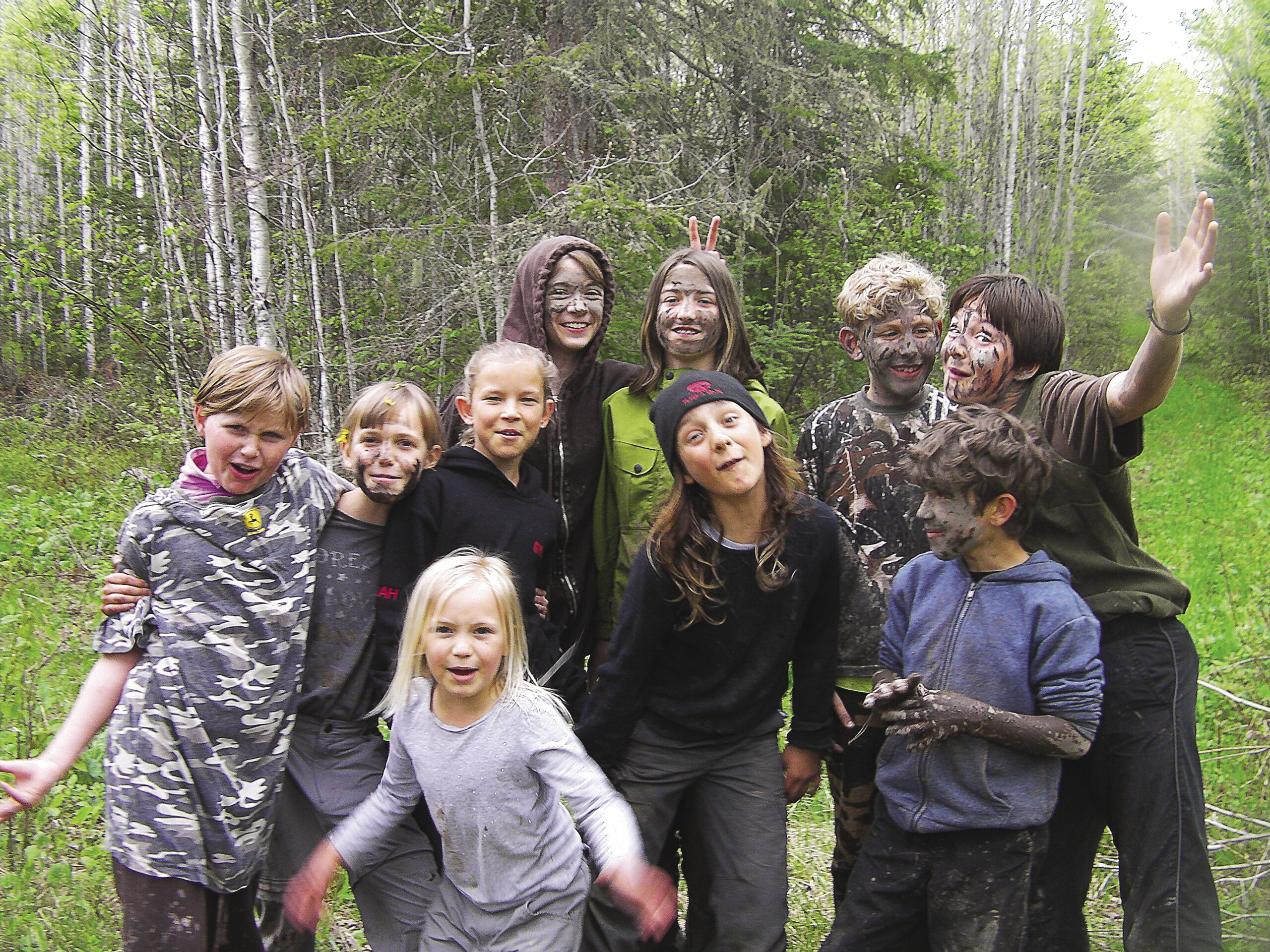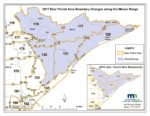In the rural community of South Gillies, there’s a tall wooden staircase that leads to a huge oval hobbit-like door. Through the door is a classroom like no other—you won’t find rows of desks and chairs like in a traditional classroom. Instead, in the centre of the room is a tree house and under the tree house is a puppet theatre. On the floor level is a window, and mosaics adorn the floor and walls. Every nook, hook, shelf and cubby is home to art supplies, books, bones, stones and microscopes. Then there is the other part of the school: the outdoors. It’s called The Forest School—A Centre for Hands-on Learning. (Not to be confused with the movement of nature-based learning generically called forest schools. However, both the movement and The Forest School have similar goals: to get kids outside and connected with nature.)
Sue Holloway has offered alternative learning programs since 2007 to children ages four to 14 on her property in South Gillies, about 30 km south of Thunder Bay. The Forest School curriculum is decided on by the students themselves. Ideas and interests are discussed and then a topic for the term is chosen by consensus. Studies have ranged from the ecosystem of Lake Superior, to pirates, war, peace and politics.
“But it has to be realistic. No skydiving,” said Rowan, Holloway’s 10-year-old son.
He and his 13-year-old brother, Walker, have attended the school since the beginning. All of the programs are age appropriate and address contemporary issues, as well as outdoor education. Holloway also adds social and environmental elements to each topic.
“I want to make the kids love nature enough that they care about it when they’re older,” said Holloway.
One technique she uses to help children relate to nature is to have them see a plant—to be able to describe it and see its qualities—before giving it a name. For example, Walker described a plant with long leaves, as long as the plant is tall, with a long stem and multiple little yellow petals: a dandelion.
Learning techniques can be self-directed, facilitated, explorative, experimental, and as hands-on as possible, which includes tours and outings. In a study of foods around the world, the students visited Roots to Harvest in Thunder Bay. They got to try on bee keeper suits, and watch and learn about bees and their importance in the environment. The unit ended with a service project: The Hunger Banquet, an interactive meal and a presentation on world hunger and poverty. The children sold the tickets and cooked the food for the banquet. But there was a twist; participants purchased tickets but didn’t know what their meal would be. To represent global reality, 60 percent of the participants only got a bowl of rice, which represents a low income of under $1,000 per year; 25 percent got rice and beans, representing a middle income of $1,000-$12,000; and 15 percent got a gourmet meal, representing a high income of over $12,000 per year. All of the proceeds went to Heifer International, an organization that provides livestock to communities in poverty around the world.
Three terms of programming are offered every year: fall, winter and spring. A typical day starts at 9:30 a.m. and ends at 3:30 p.m. However, last year, Holloway found that she was pressed for time. She asked the kids if they would like to go until 4:30 p.m., to which the children replied with a cheer. So the spring and fall terms have been extended. The Forest School operates three days per week: Mondays for children ages four to seven, and Tuesdays and Thursdays for children ages seven and older. Many students are home-schooled or attend public school and augment their education with the alternative learning offered at Holloway’s school, where education is based on the other three R’s: Respect, Resolve and Relate.
Learn more about The Forest School at: theforestschool.ca. Or find The Forest School on Facebook.




